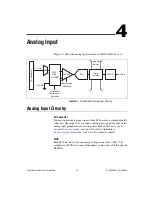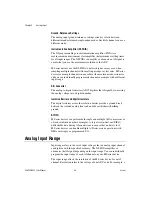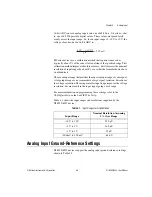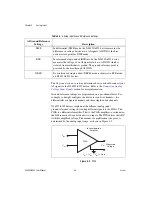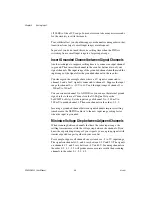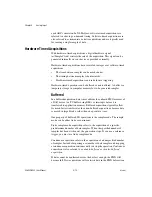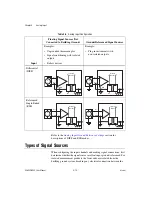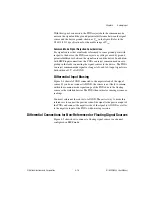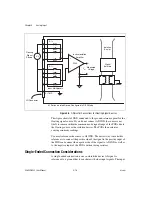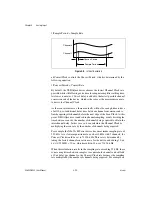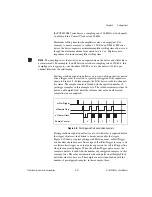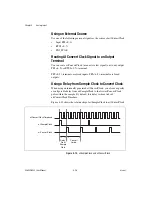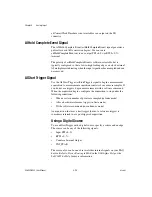
Chapter 4
Analog Input
©
National Instruments Corporation
4-13
two reference planes. Isolated front ends require a ground-reference point
to the signal that is being measured.
Floating Signal Sources
A floating signal source is not connected to the building ground system
(earth or chassis ground), but has an isolated ground-reference point. Some
examples of floating signal sources are outputs of transformers,
thermocouples, battery-powered devices, optical isolators, and isolation
amplifiers. An instrument or device that has an isolated output is a floating
signal source. You must connect the ground reference of a floating signal
to the AI ground of the device to establish a local or onboard reference for
the signal. Otherwise, the measured input signal varies as the source floats
outside the common-mode input range.
Ground-Referenced Signal Sources
A ground-referenced signal source is connected to the building system
ground (earth or chassis ground), so you must connect the ground-reference
to AI GND to establish a local or onboard reference to the signal.
Non-isolated outputs of instruments and devices that plug into the building
power system fall into this category.
The difference in ground potential between an instrument and your PC
connected to the same building power system is typically between 1 and
100 mV, but the difference can be much higher if power distribution circuits
are improperly connected. If a grounded signal source is incorrectly
measured, this difference can appear as measurement error. The
NI 6232/6233 isolates the ground of the instrument from the PC to help
eliminate this error.
Differential Connection Considerations
A DIFF connection is one in which the AI signal has its own reference
signal or signal return path. These connections are available when the
selected channel is configured in DIFF input mode. The input signal is
connected to the positive input of the PGIA, and its reference signal, or
return, is connected to the negative input of the PGIA.
When you configure a channel for DIFF input, each signal uses two
multiplexer inputs—one for the signal and one for its reference signal.



